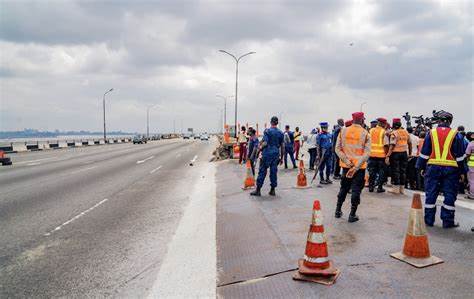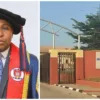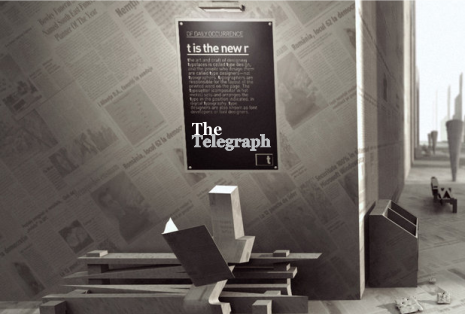To ensure optimal security of the Third Mainland Bridge, the Federal Government has proposed the installation of solar-powered lights and High Definition (HD) closed-circuit television (CCTV) cameras on the bridge.
Minister of Works, David Umahi, who disclosed this during an inspection of the under-deck lagoon sections of the Third Mainland, Carter, Independence and Falomo bridges, said comprehensive rehabilitation of the 11.8-kilometre bridge would begin on November 1, and last for a period of three months.
Umahi, who visited with a team of engineers, directors of the Federal Ministry of Works, also inspected the deteriorating Marina shoreline, the failing portions of the Five Cowries Bridge located inside Zone Two Police Headquarters in Onikan, Ijora Bridge and Marina Bridge in Apapa.
According to him, the entire stretch of the Third Mainland Bridge would undergo total resurfacing with minimal discomfort to road users, and the repairs would be carried out by midnight during the weekend.
He added that if need be to work during the day, it will always be from between 12 midnight and 4:00 a.m.
The Minister, who said he carried out inspection of the top surface of the bridge on Friday before embarking on inspection of the Lagoon portions, explained that patching of various sections of the top surface of the Third Mainland bridge had led to undulating surfacing, which was not healthy for its safety, hence the need to remove and relay the entire asphaltic covering.
He said: “We are going to mill out the excess asphalt and retain only two millimetres.
“The proposed maintenance of Third Mainland Bridge, which would last three months, was the first phase meant to secure the integrity as well as aesthetics of the upper deck components of the bridge.
“The maintenance of the aesthetics would include replacement of the railings, installation of solar-powered lights and CCTV cameras for optimal security of the bridge.”
Umahi assured that the three-month maintenance work would be without discomfort to motorists.
He added that more than one contractor would be engaged due to the emergency nature of the work, which would end in Phase Four; that will entail the repairs of deflected slabs, bearings, piers and pile caps.
The minister lamented that most of the bridges were about 60 years old and had outlived their design lifespan, hence the need for constant rehabilitation.
He said the Marina Shoreline had deteriorated and was threatening the foundation of some parts of the Blue Rail Line, hence the need for urgent protection which had begun. “Marina shoreline is gone,” he quipped.
He warned that henceforth a 10-year maintenance responsibility would be attached to projects for contractors to bear repair costs within the period if the road failed.
He added that contractors who constructed roads that failed within two years risked jail terms in line with global practices to curb shoddy constructions.
“We are trying to introduce a lesser punishment by saying all our projects going forward, we have to bring it up in the Federal Executive Council (FEC) and then finally to the National Assembly to make it a law.
“So, if you know that you are going to be responsible for 10 years, from day one, you will be very serious and very careful to make sure that you build an enduring infrastructure that you will be responsible for 10 years,” he added.


